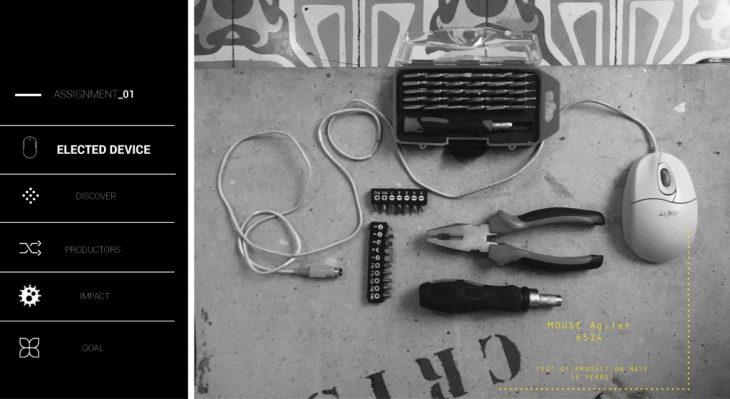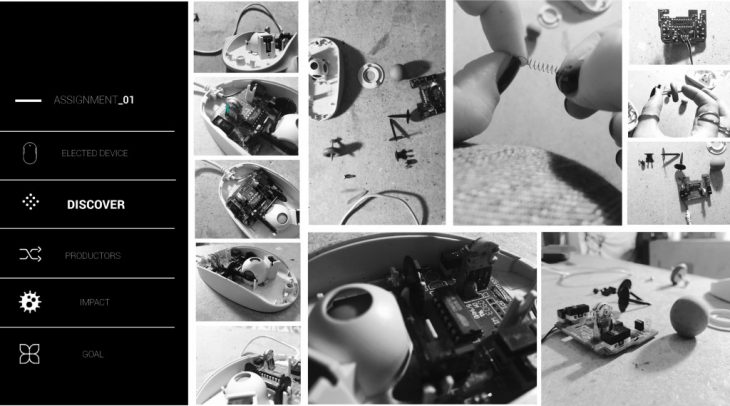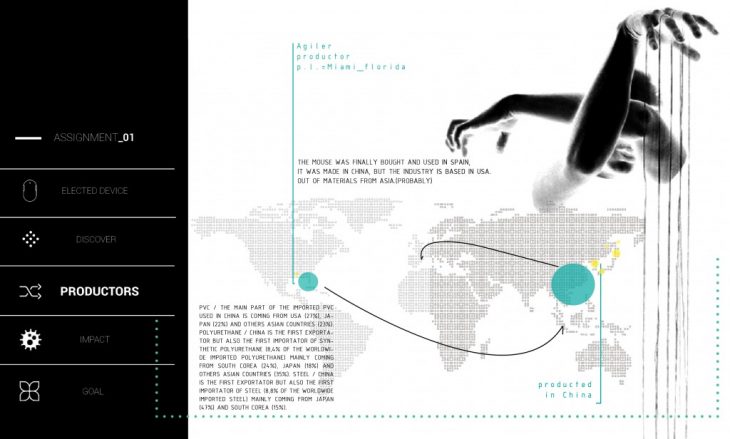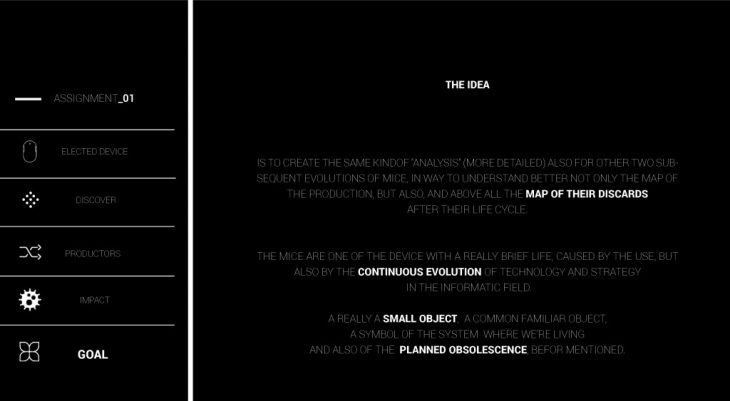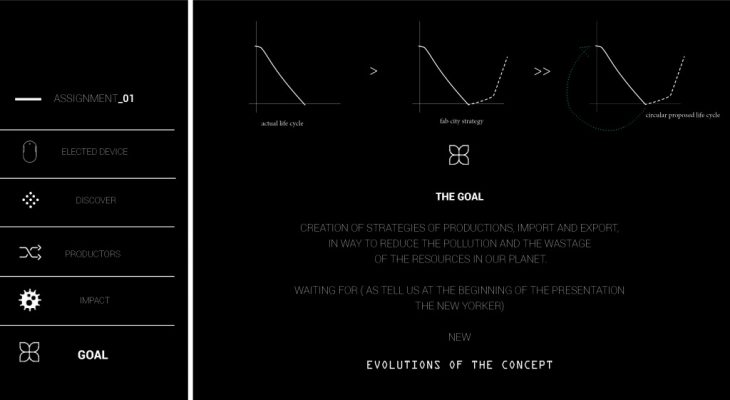ASSIGNMENT_01 FABCITY DESIGN STRATEGIES
Iaac _MaCT_Fab City Design Strategies a course of Tomaz Diez and Mathilde Marengo
Assistant: Mariana Quintero, Student: Federica Ciccone
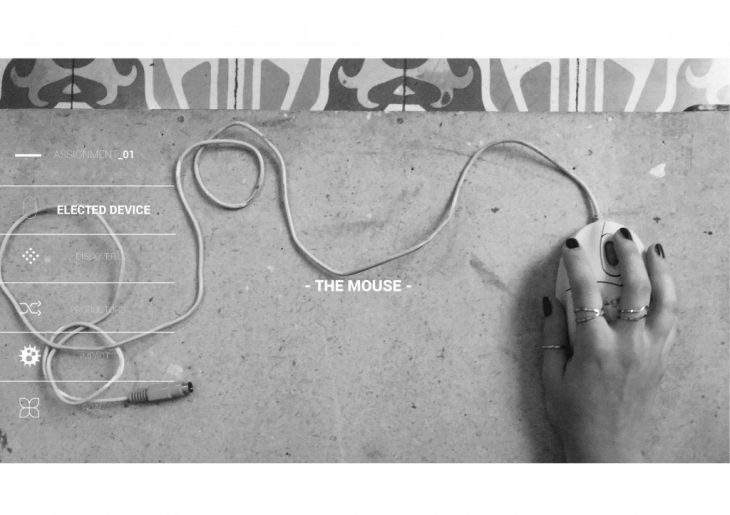
Why the mouse?
Because THE MOUSE IS A SYMBOL, A SIMPLE BUT INDISPENSABLE OBJECT, the human device for excellence.
A GREAT contended DISCOVERY OF ‘80 (OR MAYBE ‘70 we would say), SYMBOL OF CONTROVERSIAL LOGIC SYSTEM of the programmed obsolescence SCHEDULED by commercial rules,
BUT ALSO TIED TO CONTINUE AND DENIED technological developments.
It is also a BRIDGE, the CONCRETE vehicle THAT ACTUALLY connected the MEN to THE REALITY OF CONTROLLERS and softwares, BECOMING EXTENSION and translator of our thoughts.
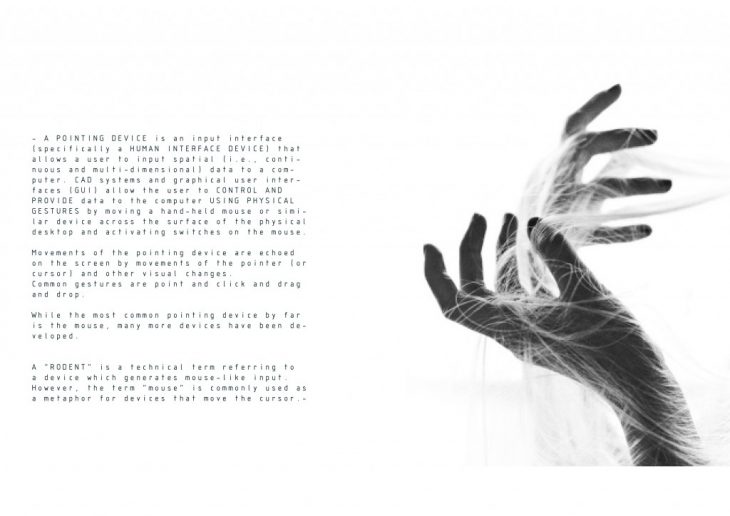
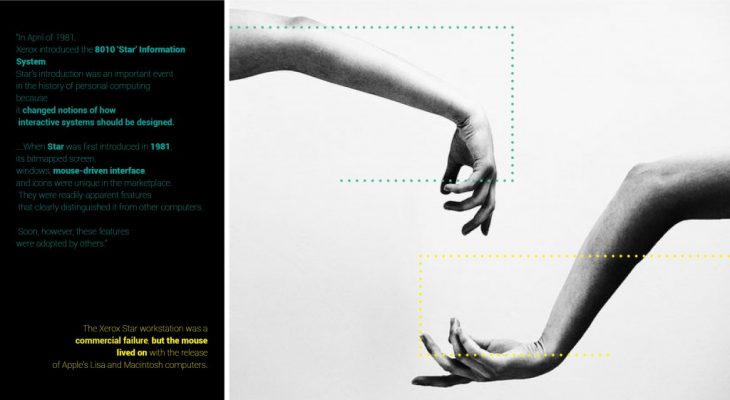
“So was what (Steve) Jobs took from Xerox the idea of the mouse?
Not quite,because Xerox never owned the idea of the mouse.
The PARC researchers got it from the computer scientist Douglas Engelbart, at Stanford Research Institute, fifteen minutes away on the other side of the university campus. Engelbart dreamed up the idea of moving the cursor around the screen with a stand-alone mechanical ‘animal’ back in the mid- nineteen-sixties. His mouse was a bulky, rectangular affair, with what looked like steel roller-skate wheels.
If you lined up Engelbart’s mouse, Xerox’s mouse, and Apple’s mouse, you would not see the serial reproduction of an object. You would see the ”evolution of a concept”.
“The mouse and keyboard won’t go away completely as they are an extremely fast and efficient way of interacting with computers, but we are going to see a lot more manipulating and placing of real life things,” says David Kurlander, formerly of Microsoft’s User Interface and Graphics Research Group.
“We’ll also see more pointing, speech, and combinations of these.” He also predicts that flat surfaces such as tabletops, walls or windows will be used as display screens, with images projected from personal projectors mounted on clothing or worn around the neck.
